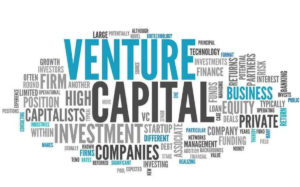Venture capitalist stages for funding startups

An essential component of the development of fintech startups is funding. When a business is founded, the concept most frequently develops into the next big thing that competes with other major businesses in the market. Seeking funding from investors for expansion and growth is an essential step for startups to adopt to reach their point of strength.
Startups engage in funding rounds with investors who raise money for them in exchange for equity or a stake in the business. The first step in starting a business is for the corporation to initially finance itself through “bootstrapping.” The investor then raises the bar for the startup by providing funding for growth and operations.
Startup financing, particularly in the beginning, can be very risky. An important strategy used by investors is to assess the business and determine its true worth. The analytical process of determining a company’s current and future worth is called valuation. Investors would need to know the startup’s track record of success (if any), the risk involved, the size of the market, the management team, the management style, and other factors to conduct a valuation.
This piece examines the various phases venture capitalists can invest in startups.
Funding stages for startups
Pre-seed funding, seed funding, series A funding, series B funding, and series C funding are the different stages of startup funding. Each stage has its implications and characteristics.
Pre-seed Funding
Pre-seed funding isn’t the concern of investors in the business community. In the pre-seed funding stage, the business primarily raises money through bootstrapping and other sources, such as borrowing money from friends, family, and other sources. At this stage, little to no startup due diligence or valuation is required. During this time, the founders operate the business for the first time and provide proof-of-concept for the enterprise.
Due to the high level of risk involved in the pre-seed funding, investors are probably not going to offer capital to businesses at this stage.
Seed Funding
A company’s growth is formally launched with seed funding. This concerns the initial funding a company receives from external sources. At this point, the investor is interested in whether there is a user base or track record that has been established (proof of concept).
For a tree to grow, a seed must first be sown and given time to develop. This tree-planting process is similar to “seed funding.” A $10,000–$1000,000 seed budget can be raised from investors. Angel investors, who typically invest in ventures carrying higher risks, make up the majority of seed funding participants.
Most of the time, seed funding is all a startup needs to get off the ground; it may never move on to Series A funding at the end.
Series A Funding
The startup has had some notable growth success up to this point. The series A startup differs from a seed-funded startup in a few ways. While Seed funding requires capital to launch a business by demonstrating a strategy for success, the series A funding entails that a strategy is already in place and investors are primarily interested in seeing a business that generates a profit and is willing to scale. The business needs investment to make long-term profits at the Series A funding stage.
Approximately $1,000,000 and up to $20,000,000 in funding from investors are attracted by series A funding. Investors look for businesses to increase profits and have a tested plan that can help the startup in increasing profits. Depending on the sector, companies looking for Series A funding possess valuations between $24,000,000 and $30,000,000.
Series B funding
The company has moved past the business development stage and is attempting to take advantage of market opportunities as it enters the Series B funding rounds. The startup’s primary goal at this point is to increase its market reach. Businesses seeking Series B funding must demonstrate to investors that they are equipped to operate at a larger scale for greater profitability.
The company seeking Series B funding must demonstrate two conditions: that there is a demand for the company’s services in other locations and that additional funding from the investor is necessary to meet these demands and generate profit.
Unlike the earlier mentioned funding types, Series B funding is a more experienced type. At this stage, the investor is interested in your revenue growth projections for the years leading up to the Series B funding, preferably five years prior. Businesses in Series B are worth between $30,000,000 and $100,000,000.
Series C funding
Businesses that raise Series C funding are widely distributed and very successful. At this point, the company is looking for funding to expand into new markets and products or to buy out rival businesses. The investor demands that the company provide past projects completed, an audited balance sheet for the previous five years, its business methodology, its principal members, and other information during the series C funding stage.
At the Series C stage, the investor injects capital by relying on the company’s prior success rather than necessarily on the idea or the success strategy. Investment banks, private equity firms, and large investment corporations are the key investors at this point.
Conclusion
The business funding life cycle is a crucial step in the development of a company. To prepare for the requirements and expectations needed for each funding round, businesses must understand the differences between the various capital raising rounds.
Before the company’s initial public offering, investors can help businesses grow with the help of series funding.
Frequently Asked Questions (FAQs)
Businesses typically expand before launching an initial public offering (IPO). However, there are times when this isn’t the case, particularly when a company has experienced a loss after receiving Series C funding and is unable to go public; in that scenario, Series D financing would be raised.
The fourth stage of a startup’s funding line is Series D funding. A loss in the Series C funding stage necessitates the Series D, though it is not always necessary.
Don't miss a thing. Follow us on Telegram and Follow us on WhatsApp. If you love videos then also Subscribe to our YouTube Channel. We are on Twitter as MakeMoneyDotNG.




